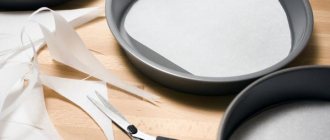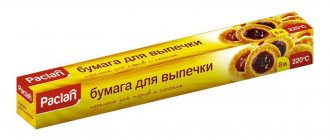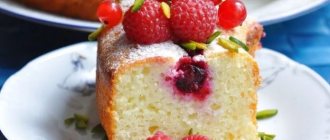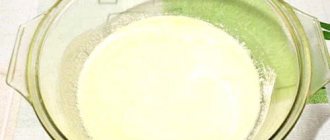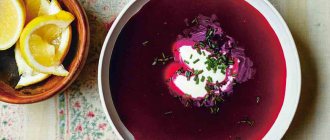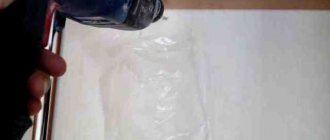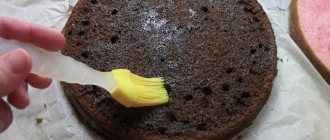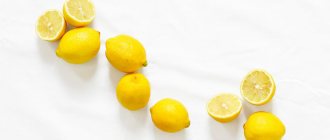In various families, it is customary to organize feasts and invite guests for a pleasant leisure time. To brighten up the conversation, the hostess of the house tries to surprise visitors with a delicious dessert. Quite often it turns out that baking paper is out of stock and fuss begins.
What to do if you don't have parchment paper. Going to the supermarket is inconvenient; you need to spend precious time setting the table. But finding an alternative to this thing is not difficult. Especially when you consider that it is far from a new baking tool.
The history of the use of this product is completely simple. Our ancestors long ago used fig leaves when clay ovens appeared. It served as an additional means of protection against soot and soot. With the advent of parchment, ancient people tried to wrap food and the effect exceeded all expectations. It turned out delicious and looked beautiful. Over time, this habit settled and became traditional.
So, what to do if you don’t have parchment paper. We have quite a few alternative replacement methods at our disposal. One of them is ordinary tracing paper.
What is its peculiarity
Parchment paper is specifically designed for baking. It does not allow grease and water to pass through and is highly durable. Food baked on parchment does not lose its taste and does not absorb foreign odors. Baked goods do not dry out or burn. For baking, only food parchment is used; it does not contain any impurities dangerous to humans.
Is it possible to replace such a useful household item? The answer is yes! Available means include:
- writing paper,
- tracing paper,
- silicone molds and mats,
- foil,
- baking bags,
- flour packaging.
Materials contraindicated for replacement
Do not under any circumstances use:
- Newspaper sheets. They contain a large amount of printing ink with a high lead content, which has a detrimental effect on human health.
- Notebook sheets with drawings or words. Drawings or lines on a notebook can spoil the appearance of the finished product. In addition, drawings or writing written in ink will also not have the best effect on your well-being.
- Plastic bags. The composition of these products differs significantly from hoses specially designed for this purpose. When exposed to temperatures, they are susceptible to melting, releasing harmful substances into baked goods.
So we figured out how you can replace baking paper. In the end, I would like to give one recommendation: before using this or that product, conduct preliminary testing. To do this, preheat the oven and place a baking sheet with a liner in it. After 15 minutes, inspect, if the coating has not changed its color or changed shape, then it is quite suitable for baking.
Replace with writing paper
You can replace parchment paper with regular paper. This method is suitable for baking sponge cakes. For such a delicate dessert as meringue, it is better to use thick paper. The main thing is that there are no images on it, as the ink will remain on the dough and spoil the taste.
Before placing the dough on the paper, you need to generously grease it. Butter or margarine works best. To speed up the process, the oil is first ground to a creamy state. It is not advisable to melt the butter: this will only cause the paper to fall apart.
Do they need to be lubricated with oil?
Parchment paper is not greased for baking high-fat products, but additional greasing will be required for cooking low-fat and low-fat products. Paper has less grease-repellent properties than parchment, and to avoid products sticking to it, it should be lubricated.
For baking low-fat products, grease parchment paper
Tracing paper
Baked goods will not burn on tracing paper. It is used in the sewing industry to make patterns for clothes. It is similar to parchment both in appearance and in its properties. Before use, make sure the material is clean.
The difference is that the tracing paper was not pre-greased. You need to do this yourself, by analogy with writing paper. You can replace baking paper with tracing paper if the dough does not need much time to bake. Tracing paper does not have the same durability as its culinary competitor.
We recommend: What is not for sale: making a Valentine's card for February 14th with your own hands
Or maybe just grease the sheet?
When making casseroles, shortbread cookies, or apple pie, it is quite acceptable to simply grease a baking sheet or baking sheet with butter, sprinkle with flour, and shake off the excess. You can use crackers instead of flour. Teflon-coated pans greased with oil will also prevent baked goods from burning and sticking to the sides and bottom of the pan.
Advice! Do not use this method when baking meringues and macarons: they will stick to the baking sheet.
Silicone molds and mats
Silicone molds are available for sale. Molds are made in different sizes and purposes: for cupcakes, for cookies. They even sell silicone mats for bulky confectionery products. The advantage of silicone is that it can be reused many times. The material is suitable for any type of baking.
Advice! To remove the cookies from the molds without damaging them, first let them cool slightly, then pry the edges with a spatula, turn them over and tap the bottom.
Silicone-coated paper is a new invention that has captured the hearts of housewives. It is available in sheets and rolls. Each sheet can be used up to 8 times. This material requires minimal maintenance, and they will serve you for a long time and reliably.
Kitchen safety
Preparing meals for the whole family, for guests, and using kitchen appliances is always associated with some threats and dangers. In addition to high temperatures, open fire, electricity, sharp objects, there is also the danger of harmful substances getting into food, which can lead to digestive problems, poisoning, and allergic reactions. We are talking not only about E. coli or microorganisms that get into food due to violations of hygiene rules.
Toxic substances can be released from materials when heated in an oven or microwave. To prevent this from happening, so as not to spoil the holiday for guests, family members and yourself, it is strictly not recommended to use instead of parchment for baking:
- newspapers (printing ink is extremely toxic when heated);
- paper with text printed on a printer or written on with paste;
- a regular plastic bag (it will melt and the baked goods will be ruined);
- thin paper without oiling (it may crumble or catch fire).
Foil
In emergency situations, when there is nothing else left, foil will do. This material is very fragile, so you need to be very careful when transferring the dough to it. Foil tends to heat up, so you need to constantly monitor the temperature in the oven so that the products do not burn.
Miss Clean magazine recommends using foil for baking foods that release a lot of juice. Usually fish and vegetables are wrapped in it. Foil retains the juice and aroma of food. It is rarely used for baking cakes, cookies and other sweets.
Benefits of baking in a sleeve, foil or parchment
Firstly, under the action of the steam that forms inside, meat, fish or chicken are baked in their own juices and do not require the addition of fat, i.e. the dish turns out soft, juicy and more dietary.
Secondly, when baking in the oven in a sleeve or foil, the food retains useful microelements that are destroyed during frying.
Thirdly, the side dish, which can be placed in a sleeve or foil next to the main product, will be perfectly baked and will perfectly absorb the juice from the main dish.
Fourthly, the tightness of such baking allows you to safely add various sauces, marinades, and seasonings, improving and enhancing the taste of the dish. The taste of the meat can be improved by adding red wine or apple juice directly to the sleeve. The chicken can be coated with honey or sprinkled with orange juice. White wine, lemon juice or cream go well with fish.
Fifthly, baking in the oven frees up time and allows the housewife to do other things at this time.
Baking bag and flour packaging
Baking paper can be replaced with a regular baking bag. The bags have high resistance to hot temperatures. It is better to use packages as a last resort, when there are no other means at hand. The product will prevent baked goods from burning - this is its only benefit.
Have you noticed what the flour packaging is made of? Its properties are very similar to parchment. Often this is ordinary baking paper. Pour the flour into a separate container, lightly oil the packaging and start baking. Place the dough on the inside of the package to prevent the paint from imprinting on your pies.
Is there a difference between parchment and baking paper?
A glance from the outside does not reveal any external differences. A distinctive feature of parchment from paper is its higher density. Parchment is recommended for baking oily products, but paper may not withstand this and will fall apart.
In addition to baking, parchment is found in markets and stores where it is used to repack fatty or wet products. This category includes butter, spread, cottage cheese or margarine.
It is worth noting that it is better to use baking paper for baking baked goods, and baking meat and fish in this material is contraindicated. For this purpose it is necessary to use a sleeve.
No additional funds
Cookies made from not too capricious dough can be placed directly on a baking sheet without the use of special tools. Just grease it with butter or margarine.
Advice! Do not use this technique for products such as meringues or macarons; without paper they will definitely burn. But the method is convenient and economical for baking pies, casseroles, and biscuits.
You can reduce the risk of the confectionery product burning if you have semolina on hand. Just sprinkle it on an oiled baking sheet. Instead of cereal, breadcrumbs are suitable. As a last resort, take wheat flour. If you have dry bread or large crackers, you can grind them using a blender. You can bake it in a non-stick frying pan. It does not require special coatings; just grease the bottom and sides with butter.
We recommend: How to discreetly and beautifully place a Wi-Fi router to “reach” even in the furthest room
How can you replace parchment paper for baking?
There are situations when you really want to bake something, but you don’t have parchment paper at hand. Let's look at what can replace it in the table.
Table: pros and cons of various options for replacing parchment paper.
| Replacement options | pros | Minuses | Is lubrication required? | What can you bake? | What can't you bake? |
| Drawing (or sewing) tracing paper |
|
| Required | Suitable for baked goods with a high fat content (for example, shortbread or yeast dough) and for cold baked goods (cheesecakes). |
|
| Absorbent paper |
|
| Not required | Moisture-absorbing paper is suitable for baking products with medium fat content - cottage cheese products, bread, kefir baked goods. Even without lubricating such paper, they do not stick. | You cannot bake very fatty products on such paper, such as cookies with sour cream or shortbread, butter cakes. |
| Regular office paper impregnated with oil |
| Required | Oiled office paper is suitable for baking unpretentious and simple products, such as Easter cottage cheese or cookies. | Not suitable for baking French macarons and strudels. | |
| Silicone Baking Mat |
| Not required | A silicone mat is a universal device; you can bake whatever you want on it; its surface will not damage the shape of the products or affect their structure. | ||
| Silicone coated paper |
| Not required | Silicone-coated paper easily releases from finished baked goods, so it can be reused many times, and is suitable for any type of dough (for a fancy sponge cake, use it only once, otherwise it will start to stick). | ||
| Baking bag |
|
| Not required | You can bake shortbread cookies in a baking bag | You cannot bake juicy pies and pies. |
| Foil |
| Required | You can bake cookies on shiny foil, but there is a high risk that they will burn. | Foil as a material is more suitable for baking juicy things, not for baking. | |
| Silicone baking molds |
| Not required | Any type of dough can also be baked in silicone molds; it is important to remember that they are only filled one-third full, because the dough greatly increases in volume during baking. | ||
| Paper baking dishes |
| Not required | Paper molds are suitable for baking muffins, cupcakes, Easter cakes and cupcakes. | Not suitable for baking with batters such as eclairs and profiteroles |
You don’t have to use an intermediate layer in the form of various papers, but simply coat the baking sheet with margarine, spread or butter. There is an option to stop there, or to cover the oil layer with semolina, flour or breadcrumbs on top. Be careful, the flour may burn.
An oiled baking sheet can be used for making pies, pies, and casseroles. You cannot bake delicate meringues or French macarons on such a baking sheet - they will definitely burn.
On an oiled baking sheet with sprinkles, cake layers are prepared and cookies are baked.
An oiled pan filled with semolina is used for baking casseroles and pies.
Also, one of the options for replacing the use of baking paper is baking on non-stick baking sheets, in which case they do not need to be greased with oil.
Non-stick baking tray does not need to be greased
Some housewives use a non-stick mixture and grease baking pans or baking sheets with it. Here's her recipe:
- Take half a glass of any kind of flour, vegetable oil and cooking (confectionery) fat. As fat you can use melted butter and even lard, everything except margarine. The fat should be cold.
- Mix all the “ingredients”, start beating with a mixer at low speed, at low speed.
- Gradually increase the beating speed, the mixture should turn white and increase in size.
- As soon as the non-stick mixture acquires a silvery tint, we turn off the mixer and can use it.
- The mixture is applied to the bottom and sides of baking sheets and baking dishes with a special silicone brush.
This mixture is prepared more than once, and can be stored in the refrigerator for up to one year and used not only for baking, but also for other culinary purposes - for example, baking meat, fish or vegetables.
Video: how to prepare non-stick baking mixture
Using parchment paper, you can prepare meringues, eclairs and custard pies, bake cakes - delicate and fragile sweets will not stick to the baking sheet, and their shape and structure will not be disturbed. Parchment also helps when baking from yeast dough with fillings - berries or fruits, which involve the release of sweet fruit juice; without parchment it can leak out and turn into fruit caramel right on the baking sheet, and it can be very difficult to wash it off. Such capricious things as sponge cakes, which love to stick, are also baked on parchment.
Baking parchment substitutes: examples in the photo
Tracing paper has a very low density
Moisture-absorbing paper is suitable for baking cottage cheese and kefir products
Silicone baking mat - universal
Silicone coated paper is reusable
It’s very easy to get ready-made baked goods out of silicone molds - you just need to turn them out
Cookies in silicone molds turn out very beautiful.
Baked goods in paper forms are portioned and beautiful.
Paper pans are convenient for baking cupcakes and muffins
What not to use, safety rules
It is unsafe to use the following raw materials for baked confectionery products:
- Newspapers. This is a very fragile type of paper, and also impregnated with ink. They will leave imprints on the baked goods and are unlikely to be beneficial to your body.
- Dry writing paper is not used. Be sure to grease the paper with oil before you put the dough on it and put it in the oven, otherwise you will end up not being able to separate the food from the paper.
- It is not advisable to use vegetable oil for lubrication. The product does not prevent products from burning, no matter how high quality it is. But the taste and aroma will definitely be spoiled.
- Polyethylene. Its composition differs from baking bags. At high temperatures the substance may melt. Not only will the dish be spoiled, but there is also a risk of damage to kitchen utensils and household appliances, as well as accidents.
Before cooking using improvised means, you need to test them. What if they fail the oven test? Simply place a piece of the item in a preheated oven and wait 15 minutes. If the item does not catch fire, curl up or smoke, then it is safe, and you can start creating culinary masterpieces. Before cooking, make sure your baking materials are intact and free of dirty stains and foreign odors.
The kitchen is a place for true creativity. If you show your imagination, you can easily create masterpieces using improvised means!
Materials that cannot be used instead of parchment
I believe common sense is a prerequisite to becoming a pastry chef. Therefore, instead of really strange advice in the spirit of European and American instructions, I will refrain. I’d rather cite classic cases of substituting one material for another. I saw some options myself, and I think you too. Others they told me about:
- Newspapers and notebook sheets. Soviet classics. I already mentioned this above, but I will repeat it. Any printing ink, even pale, as in notebooks, contains toxic substances and is not intended for contact with food. It is harmful.
- Wax paper. It is very similar to parchment in appearance, but is impregnated with paraffin, which will begin to smoke in the oven and can catch fire even after soaking in oil. It's really dangerous.
- Non-food grade silicone. For example, soap molds, polymer clay figures, etc. When heated, it will begin to melt and release toxic substances. Not only will the baked goods become tasteless, but also poisonous.
- Polyethylene. If you accidentally confuse it with a baking sleeve, the film in the oven will catch fire and smoke the equipment from the inside. I can’t imagine how to then remove the remaining polyethylene from the walls and mold.
Also, don't try using regular vegetable oil. The baked goods will definitely stick. In addition, if an unrefined product is used, it will also smoke the baked goods. A rancid taste will not please you or your customers. Better use one of the three options I offer in this video.
Do you use parchment? Or have you already switched to other coating options. Tell us in the comments what you use to prevent desserts from sticking to the pan.
How to make a baking tray smaller?
If the edges of baked goods in your oven often burn, simply wrap them in foil in a single layer: this will keep them soft and tender. A baking tray that is too large can be easily reduced using foil. By constructing a border out of several layers, give your baked goods the desired size and shape.
Interesting materials:
Where is the state of Bangladesh located? Where is GPS located in Samsung? Where is graffiti brother? Where is the source of the Angara River? Where is the South China Sea? Where is the Kaaba compass? Where is Kazansky railway station? Where is the Enter button on an HP laptop? Where is the Suggest news button on VK? Where is the screenshot button on a laptop?
Paper baking dishes
Paper molds for muffins, Easter cakes and desserts are indispensable in the modern kitchen. These versatile cups come in a variety of sizes and colors. Their main advantages are environmental friendliness, low price and elegant appearance (baked goods can be served directly in them). The only drawback is one-time use.
Paper molds also differ in density: in tougher ones, the products are baked directly on the oven rack, and thin cups are placed on a baking sheet. They are first lubricated from the inside with oil with a special brush for convenience.
Note:
- cups for cupcakes or muffins are filled with dough to 2/3 of the volume;
- Easter cake molds are filled 1/3 with yeast dough.
After cooking, the products do not need to be removed from the paper form. It will serve as decoration and maintain the hygiene of the finished product.
Cake layers
Parchment also helps when preparing cakes, especially if they are prepared with different fillings (cocoa, vanilla, cinnamon). When using paper, there is no need to wait for the mold to cool down, then rinse it and dry it so that it is suitable for baking the next cake. Parchment allows the cake to bake evenly and not burn on the bottom.
To use, the parchment must first be cut into the desired shape (the paper can be given either a round or square appearance). The parchment should cover not only the bottom of the pan, but also the sides. Before filling the form with dough, the paper must be oiled with melted butter or high-quality vegetable oil. And after readiness, the cake is removed from the mold along with the parchment.
If the parchment was poorly oiled and stuck to the dough, then you can make it easier to remove without damaging the crust using the following methods:
- moisten the paper with a damp brush or rag;
- carefully cut the parchment using a knife with a thin and even blade;
- place the cake with paper on a damp cloth.
If the chosen type of parchment sticks to the cake, it should be changed the next time you prepare the dessert.
Thin stationery paper
Regular stationery paper in A3 or A4 format is suitable for “quick” baking. Paper cannot withstand high temperatures and long cooking times. Often products dry out to it. And some housewives believe that stationery paper spoils the taste of the finished product.
However, sometimes there is nothing else at hand. Please make sure that there are no notes on the sheets, otherwise they will be imprinted on the baked goods. This looks unsightly and worsens the taste. And, of course, do not forget to oil the paper on both sides.
